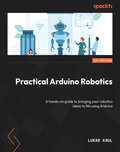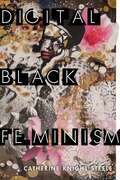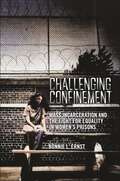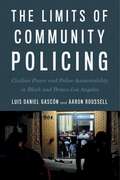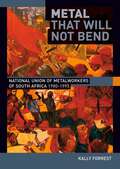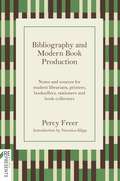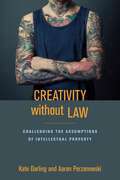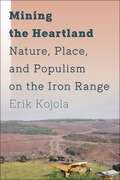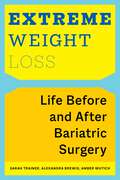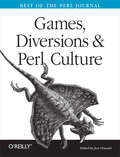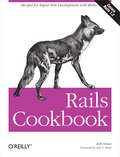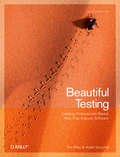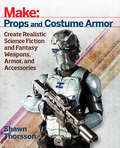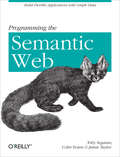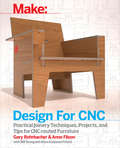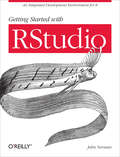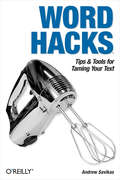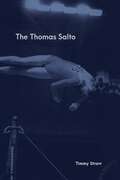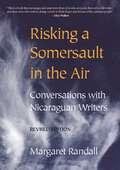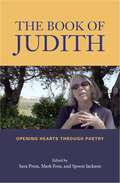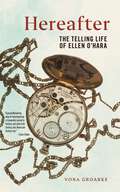- Table View
- List View
Practical Arduino Robotics: A hands-on guide to bringing your robotics ideas to life using Arduino
by Lukas KaulBuild your hardware, electronics, and programming skills, and use them to realize your advanced robotics projects with this powerful platform Purchase of the print or Kindle book includes a free PDF eBookKey FeaturesBecome an expert in selecting sensors, motors, and Arduino boards for any robotics projectDiscover how to write effective and reusable code for your Arduino robotics projectsLearn to build a camera-based line follower and a self-balancing telepresence robot on your ownBook DescriptionEvery robot needs a “brain,” and the Arduino platform provides an incredibly accessible way to bring your Arduino robot to life. Anyone can easily learn to build and program their own robots with Arduino for hobby and commercial uses, making Arduino-based robots the popular choice for school projects, college courses, and the rapid prototyping of industrial applications! Practical Arduino Robotics is a comprehensive guide that equips you with the necessary skills and techniques that can be applied to various projects and applications, from automating repetitive tasks in a laboratory to building engaging mobile robots. Building on basic knowledge of programming and electronics, this book teaches you how to choose the right components, such as Arduino boards, sensors, and motors, and write effective code for your robotics project, including the use of advanced third-party Arduino libraries and interfaces, such as Analog, SPI, I2C, PWM, and UART. You'll also learn different ways to command your robots wirelessly, such as over Wi-Fi. Finally, with basic to advanced project examples, this book illustrates how to build exciting autonomous robots like a self-balancing telepresence robot. By the end of this book, you'll be able to design and create your own custom robots for a wide variety of applications.What you will learnUnderstand and use the various interfaces of an Arduino boardWrite the code to communicate with your sensors and motorsImplement and tune methods for sensor signal processingUnderstand and implement state machines that control your robotImplement feedback control to create impressive robot capabilitiesIntegrate hardware and software components into a reliable robotic systemTune, debug, and improve Arduino-based robots systematicallyWho this book is forIf you’re excited about robotics and want to start creating your own robotics projects from the hardware up, this book is for you. Whether you are an experienced software developer who wants to learn how to build physical robots, a hobbyist looking to elevate your Arduino skills to the next level, or a student with the desire to kick-start your DIY robotics journey, you’ll find this book very useful. In order to successfully work with this book, you’ll need basic familiarity with electronics, Arduino boards and the core concepts of computer programming.
Digital Black Feminism (Critical Cultural Communication)
by Catherine Knight SteeleWinner, Diamond Anniversary Book Award, awarded by the National Communication AssociationWinner, 2022 Nancy Baym Book Award, given by the Association of Internet ResearchersTraces the longstanding relationship between technology and Black feminist thoughtBlack women are at the forefront of some of this century’s most important discussions about technology: trolling, online harassment, algorithmic bias, and influencer culture. But, Catherine Knight Steele argues that Black women’s relationship to technology began long before the advent of Twitter or Instagram. To truly “listen to Black women,” Steele points to the history of Black feminist technoculture in the United States and its ability to decenter white supremacy and patriarchy in a conversation about the future of technology. Using the virtual beauty shop as a metaphor, Digital Black Feminism walks readers through the technical skill, communicative expertise, and entrepreneurial acumen of Black women’s labor—born of survival strategies and economic necessity—both on and offline.Positioning Black women at the center of our discourse about the past, present, and future of technology, Steele offers a through-line from the writing of early twentieth-century Black women to the bloggers and social media mavens of the twenty-first century. She makes connections among the letters, news articles, and essays of Black feminist writers of the past and a digital archive of blog posts, tweets, and Instagram stories of some of the most well-known Black feminist writers of our time. Linking narratives and existing literature about Black women’s technology use in the nineteenth, twentieth, and twenty-first century, Digital Black Feminism traverses the bounds between historical and archival analysis and empirical internet studies, forcing a reconciliation between fields and methods that are not always in conversation. As the work of Black feminist writers now reaches its widest audience online, Steele offers both hopefulness and caution on the implications of Black feminism becoming a digital product.
Challenging Confinement: Mass Incarceration and the Fight for Equality in Women's Prisons
by Bonnie L. ErnstExamines how the feminist movements in the late twentieth century ignited prison protests, activism, and reform in women’s prisonsWhile the late twentieth century brought about greater rights for women, it also saw a rapid increase in the number of female prisoners. Before their confinement, many incarcerated women had gained access to work and higher education. But once behind bars, they found the only programs available for them perpetuated misogynistic norms.Challenging Confinement is about how incarcerated women incorporated strategies from feminist movements into their activism behind bars. Facing long sentences, overcrowded prisons, and a lack of rehabilitation programs, incarcerated women protested, organized, and filed lawsuits to advocate for gender and racial equality in prison. Drawing on prison grievance reports, oral histories, state archives, and private collections, Bonnie L. Ernst tells the story of how women's movements, beginning in the 1920s and ending in the era of mass incarceration, infused prison activism in Michigan with new energy. Female prisoners and attorneys successfully persuaded the federal court to force state prisons to offer more programming and access to legal services. Mass incarceration swallowed up many of those efforts, but this history demonstrates how core principles of women’s movements encouraged incarcerated women to form coalitions and challenge their jailers. By bringing together histories of race, gender, and punishment, Challenging Confinement reveals how incarcerated women worked together to resist, in an era of mass imprisonment.
Shakespeare and the Coconuts: On post-apartheid South African culture
by Natasha DistillerA unique look at Shakespeare's works' influence on South African writingIn this book Natasha Distiller explores historic and contemporary uses of Shakespeare in South African society which illustrate the complexities of colonial and post-colonial realities as they relate to iconic Englishness. Beginning with Solomon Plaatje, the author looks at the development of an elite group educated in English and able to use Shakespeare to formulate South African works and South African identities. Refusing simple or easy answers, Distiller then explores the South African Shakespearian tradition postapartheid. Touching on the work of, amongst others, Can Themba, Bloke Modisane, Antony Sher, Stephen Francis, Rico Schacherl and Kopano Matlwa, and including the popular media as well as school textbooks, Shakespeare and the Coconuts engages with aspects of South Africa's complicated, painful, fascinating political and cultural worlds, and their intersections. Written in an accessible style to explain current cultural theory, Shakespeare and the Coconuts will be of interest to students, academics and the general interested reader.
The Limits of Community Policing: Civilian Power and Police Accountability in Black and Brown Los Angeles
by Luis Daniel Gascón Aaron RoussellA critical look at the realities of community policing in South Los AngelesThe Limits of Community Policing addresses conflicts between police and communities. Luis Daniel Gascón and Aaron Roussell depart from traditional conceptions, arguing that community policing—popularized for decades as a racial panacea—is not the solution it seems to be. Tracing this policy back to its origins, they focus on the Los Angeles Police Department, which first introduced community policing after the high-profile Rodney King riots. Drawing on over sixty interviews with officers, residents, and stakeholders in South LA’s “Lakeside” precinct, they show how police tactics amplified—rather than resolved—racial tensions, complicating partnership efforts, crime response and prevention, and accountability. Gascón and Roussell shine a new light on the residents of this neighborhood to address the enduring—and frequently explosive—conflicts between police and communities. At a time when these issues have taken center stage, this volume offers a critical understanding of how community policing really works.
Metal that Will not Bend: The National Union of Metalworkers of South Africa, 1980-1995
by Kally ForrestIn the 1980s there was a surge of trade union power in South Africa. The National Union of Metalworkers of South Africa (Numsa) was prominent and innovative in this assertion of muscle.Metal that does not Bend traces Numsa’s accumulation, from a few small unions in a handful of factories to the staging of national strikes involving thousands of workers in auto and engineering. It examines how the union used its influence in macroeconomic and political arenas. Numsa was Cosatu’s most radical socialist affiliate, and the book explores its attempts to implement its vision. Historians have framed apartheid’s downfall as resulting from the activities of the exiled liberation movement, global anti-apartheid boycott strategies and internal township insurrection. This book reasserts the critical role of the internal labour movement.
Bibliography and Modern Book Production: Notes and sources for student librarians, printers, booksellers, stationers, book-collectors
by Percy FreerBibliography and Modern Book Production is a fascinating historic journey through the fields of print history, librarianship and publishing. It covers key developments from 1494 to 1949 in bibliography and book production from the history of scripts and paper manufacture to the origins of typefaces and printing. Although not a textbook, the book was a guide for library students in the 1950s on the essential literature of librarianship.As the first librarian appointed to Wits University in 1929, Percy Freer’s near encyclopaedic knowledge of the subject of bibliography enabled him to develop a key resource for relevant library examinations in South Africa and abroad. Due to its immense value as a historic record, and to acknowledge Freer’s contributions as scholar, librarian and publisher, it is being reissued as part of the Wits University Press Re/Presents series to make it accessible to scholars in book histories, publishing studies and information science.
Creativity without Law: Challenging the Assumptions of Intellectual Property
by Kate Darling Aaron PerzonowskiBehind the scenes of the many artists and innovators flourishing beyond the bounds of intellectual property laws Intellectual property law, or IP law, is based on certain assumptions about creative behavior. The case for regulation assumes that creators have a fundamental legal right to prevent copying, and without this right they will under-invest in new work. But this premise fails to fully capture the reality of creative production. It ignores the range of powerful non-economic motivations that compel creativity, and it overlooks the capacity of creative industries for self-governance and innovative social and market responses to appropriation. This book reveals the on-the-ground practices of a range of creators and innovators. In doing so, it challenges intellectual property orthodoxy by showing that incentives for creative production often exist in the absence of, or in disregard for, formal legal protections. Instead, these communities rely on evolving social norms and market responses—sensitive to their particular cultural, competitive, and technological circumstances—to ensure creative incentives. From tattoo artists to medical researchers, Nigerian filmmakers to roller derby players, the communities illustrated in this book demonstrate that creativity can thrive without legal incentives, and perhaps more strikingly, that some creative communities prefer, and thrive, in environments defined by self-regulation rather than legal rules. Beyond their value as descriptions of specific industries and communities, the accounts collected here help to ground debates over IP policy in the empirical realities of the creative process. Their parallels and divergences also highlight the value of rules that are sensitive to the unique mix of conditions and motivations of particular industries and communities, rather than the monoculture of uniform regulation of the current IP system.
Mining the Heartland: Nature, Place, and Populism on the Iron Range
by Erik KojolaHonorable Mention, Outstanding Publication Award, given by the Environmental Sociology Section of the American Sociological AssociationA riveting portrait of the cultural struggles and political conflicts of proposed copper-nickel mines in Minnesota’s Iron RangeOn an unseasonably warm October afternoon in Saint Paul, hundreds of people gathered to protest the construction of a proposed copper-nickel mine in the rural northern part of their state. The crowd eagerly listened to speeches on how the project would bring long-term risks and potentially pollute the drinking water for current and future generations. A year later, another proposed mining project became the subject of a public hearing in a small town near the proposed site. But this time, local politicians and union leaders praised the mine proposal as an asset that would strengthen working-class communities in Minnesota.In many rural American communities, there is profound tension around the preservation and protection of wilderness and the need to promote and profit from natural resources. In Mining the Heartland, Erik Kojola looks at both sides of these populist movements and presents a thoughtful account of how such political struggles play out. Drawing on over a hundred ethnographic interviews with people of the region, from members of labor unions to local residents to scientists, Kojola is able to bring this complex struggle over mining to life. Focusing on both pro- and anti-mining groups, he expands upon what this conflict reveals about the way whiteness and masculinity operate among urban and rural residents, and the different ways in which class, race, and gender shape how people relate to the land. Mining the Heartland shows the negotiation and conflict between two central aspects of the state's culture and economy: outdoor recreation in the Land of Ten Thousand Lakes and the lucrative mining of the Iron Range.
Extreme Weight Loss: Life Before and After Bariatric Surgery
by Sarah Trainer Alexandra Brewis Amber WutichA study that explores patients’ perspectives on a life-altering surgeryBariatric surgery rates around the world have increased exponentially over the past decade. In Extreme Weight Loss, anthropologists Sarah Trainer, Alexandra Brewis, and Amber Wutich provide us with an inside look at how patients experience this medical procedure, as well as its far-reaching and complex personal implications. Drawing on patient interviews, survey data, and more, Trainer, Brewis, and Wutich explore why people decide to undergo bariatric surgery, and how that decision transforms their lives. They show, in painstaking detail, how the journey to weight loss is can be at once painful and liberating, dispiriting and self-affirming.Extreme Weight Loss explores questions about which bodies are treated as though they belong in modern societies, and which bodies are treated as unwanted. It considers how people challenge and manage these unfair standards, illuminating what it means to be large-bodied in America’s diet-obsessed culture.
Games, Diversions & Perl Culture: Best of the Perl Journal (Best of the Perl Journal)
by Jon OrwantThe Perl Journal (TPJ) did something most print journals aspire to, but few succeed. Within a remarkable short time, TPJ acquired a cult-following and became the voice of the Perl community. Every serious Perl programmer subscribed to it, and every notable Perl guru jumped at the opportunity to write for it. Back issues were swapped like trading cards. No longer in print format, TPJ remains the quintessential spirit of Perl--a publication for and by Perl programmers who see fun and beauty in an admittedly quirky little language.Games, Diversions, and Perl Culture is the third volume of The Best of the Perl Journal, compiled and re-edited by the original editor and publisher of The Perl Journal, Jon Orwant. In this series, we've taken the very best (and still relevant) articles published in TPJ over its 5 years of publication and immortalized them into three volumes.The 47 articles included in this volume are simply some of the best Perl articles ever written on the subjects of games, diversions, and the unique culture of this close-knit community, by some of the best Perl authors and coders. Games, Diversions & Perl Culture focuses on entertaining topics that make Perl users such fanatics about the language. You'll find all of the playful features TPJ offered over the years, including the Obfuscated Perl Contests, Perl Quiz Shows, humor articles, and renowned one-line recipes. The book also contains a panoply of quirky applications of Perl, including genetic algorithms, home automation, music programming, and an entire section on natural language processing.This anthology is an unmatched compendium of Perl lore.
Rails Cookbook: Recipes for Rapid Web Development with Ruby
by Rob OrsiniRails Cookbook is packed with the solutions you need to be a proficient developer with Rails, the leading framework for building the new generation of Web 2.0 applications. Recipes range from the basics, like installing Rails and setting up your development environment, to the latest techniques, such as developing RESTful web services.With applications that are code light, feature-full and built to scale quickly, Rails has revolutionized web development. The Rails Cookbook addresses scores of real-world challenges; each one includes a tested solution, plus a discussion of how and why it works, so that you can adapt the techniques to similar situations. Topics include:Modeling data with the ActiveRecord librarySetting up views with ActionView and RHTML templatesBuilding your application's logic into ActionControllerTesting and debugging your Rails applicationBuilding responsive web applications using JavaScript and AjaxEnsuring that your application is security and performs wellDeploying your application with Mongrel and ApacheUsing Capistrano to automate deploymentUsing the many Rails pluginsWorking with graphicsWhether you're new to Rails or an experienced developer, you'll discover ways to test, debug and secure your applications, incorporate Ajax, use caching to improve performance, and put your application into production. Want to get ahead of the Web 2.0 curve? This valuable cookbook will save you hundreds of hours when developing applications with Rails.
Beautiful Testing: Leading Professionals Reveal How They Improve Software
by Adam Goucher Tim RileySuccessful software depends as much on scrupulous testing as it does on solid architecture or elegant code. But testing is not a routine process, it's a constant exploration of methods and an evolution of good ideas. Beautiful Testing offers 23 essays from 27 leading testers and developers that illustrate the qualities and techniques that make testing an art. Through personal anecdotes, you'll learn how each of these professionals developed beautiful ways of testing a wide range of products -- valuable knowledge that you can apply to your own projects.Here's a sample of what you'll find inside:Microsoft's Alan Page knows a lot about large-scale test automation, and shares some of his secrets on how to make it beautifulScott Barber explains why performance testing needs to be a collaborative process, rather than simply an exercise in measuring speedKaren Johnson describes how her professional experience intersected her personal life while testing medical softwareRex Black reveals how satisfying stakeholders for 25 years is a beautiful thingMathematician John D. Cook applies a classic definition of beauty, based on complexity and unity, to testing random number generatorsAll author royalties will be donated to the Nothing But Nets campaign to save lives by preventing malaria, a disease that kills millions of children in Africa each year.This book includes contributions from:Adam GoucherLinda WilkinsonRex BlackMartin SchröderClint TalbertScott BarberKamran KhanEmily ChenBrian NitzRemko TronçonAlan PageNeal NorwitzMichelle LevesqueJeffrey YasskinJohn D. CookMurali NandigamaKaren N. JohnsonChris McMahonJennitta AndreaLisa CrispinMatt HeusserAndreas ZellerDavid SchulerTomasz KojmAdam ChristianTim RileyIsaac Clerencia
Make: Create Realistic Science Fiction & Fantasy Weapons, Armor, and Accessories
by Shawn ThorssonHave you been trying to think of a way to conquer your local comic convention through cosplay? Do you gaze with envious eyes upon the fan-made suits of armored awesomeness strolling around every year on Halloween? Do you have a spot on your wall, bookshelf, or desk that desperately needs to be filled with a screen-accurate replica of your favorite science-fiction or fantasy weapon? If so, look no further. We've got just the book for you!In this book, master prop maker Shawn Thorsson uses his unique blend of humor and insight to turn years of painful experience into detailed explanations. He'll show you many of the tools, methods, and processes that you can use to create professional-looking science fiction and fantasy props and armor. The ultimate collision of creative imagination and practical maker skills, making props and costume armor involves sculpting, molding, casting, 3D printing, CNC fabrication, painting, and countless other techniques and technologies.In this book, you'll learn:Basic fabrication methods using inexpensive, commonly-available tools and materialsSimple, low-cost methods to make foam armor out of easy-to-find foam matsHow to use the popular Pepakura software to build 3D models with paperMultiple molding and casting techniquesHow to build a "vacuforming" machine to make armor from plastic sheet stockPainting and weathering techniques that will bring your props to lifeJust enough safety advice to keep you from losing body parts along the wayWhether you're just a beginner or a seasoned builder with countless projects behind you, this book is sure to be an invaluable addition to your workshop library.
Flash CS5: The Missing Manual (The\missing Manual Ser.)
by Chris GroverOnce you know how to use Flash, you can create everything from simple animations to high-end desktop applications, but it's a complex tool that can be difficult to master on your own-unless you have this Missing Manual. This book will help you learn all you need to know about Flash CS5 to create animations that bring your ideas to life.Learn animation basics. Find everything you need to know to get started with FlashMaster the Flash tools. Learn the animation and effects toolset, with clear explanations and hands-on examplesUse 3D effects. Rotate and put objects in motion in three dimensionsCreate lifelike motion. Use the IK Bones tool to simulate realistic body movements and other linked motionsSpeed up development. Use templates, code snippets, and motion presetsDesign applications. Get an intro to building full desktop applications with Flash and Adobe AIRCreate rich interactive animations. Dive into advanced interactivity with easy-to-learn ActionScript examples
Programming Internet Email: Mastering Internet Messaging Systems
by David WoodThe Internet's "killer app" is not the World Wide Web or Push technologies: it is humble electronic mail. More people use email than any other Internet application. As the number of email users swells, and as email takes on an ever greater role in personal and business communication, Internet mail protocols have become not just an enabling technology for messaging, but a programming interface on top of which core applications are built.Programming Internet Email unmasks the Internet Mail System and shows how a loose federation of connected networks have combined to form the world's largest and most heavily trafficked message system.Programming Internet Email tames the Internet's most popular messaging service. For programmers building applications on top of email capabilities, and power users trying to get under the hood of their own email systems, Programming Internet Email stands out as an essential guide and reference book. In typical O'Reilly fashion,Programming Internet Email covers the topic with nineteen tightly written chapters and five useful appendixes.Following a thorough introduction to the Internet Mail System, the book is divided into five parts:Part I covers email formats, from basic text messages to the guts of MIME. Secure email message formats (OpenPGP and S/MIME), mailbox formats and other commonly used formats are detailed in this reference section.Part II describes Internet email protocols: SMTP and ESMTP, POP3 and IMAP4. Each protocol is covered in detail to expose the Internet Mail System's inner workings.Part III provides a solid API reference for programmers working in Perl and Java. Class references are given for commonly used Perl modules that relate to email and the Java Mail API.Part IV provides clear and concise examples of how to incorporate email capabilities into your applications. Examples are given in both Perl and Java.Part V covers the future of email on the Internet. Means and methods for controlling spam email and newly proposed Internet mail protocols are discussed.Appendixes to Programming Internet Email provide a host of explanatory information and useful references for the programmer and avid user alike, including a comprehensive list of Internet RFCs relating to email, MIME types and a list of email related URLs.Programming Internet Email will answer all of your questions about mail and extend your abilities into this most popular messaging frontier.
Programming the Semantic Web: Build Flexible Applications with Graph Data
by Toby Segaran Colin Evans Jamie TaylorWith this book, the promise of the Semantic Web -- in which machines can find, share, and combine data on the Web -- is not just a technical possibility, but a practical reality Programming the Semantic Web demonstrates several ways to implement semantic web applications, using current and emerging standards and technologies. You'll learn how to incorporate existing data sources into semantically aware applications and publish rich semantic data.Each chapter walks you through a single piece of semantic technology and explains how you can use it to solve real problems. Whether you're writing a simple mashup or maintaining a high-performance enterprise solution,Programming the Semantic Web provides a standard, flexible approach for integrating and future-proofing systems and data.This book will help you:Learn how the Semantic Web allows new and unexpected uses of data to emergeUnderstand how semantic technologies promote data portability with a simple, abstract model for knowledge representationBecome familiar with semantic standards, such as the Resource Description Framework (RDF) and the Web Ontology Language (OWL)Make use of semantic programming techniques to both enrich and simplify current web applications
Design for CNC: Furniture Projects and Fabrication Technique
by Anna Kaziunas France Bill Young Gary Rohrbacher Anne FilsonDesign, DIY, and computer-controlled fabrication are a powerful combination for making high-quality customized things. Written by the founders of the architecture, design, and research firm Filson and Rohrbacher, this book takes you through the basics of CNC fabrication, the design process, production, and construction of your own furniture designs. Through their AtFAB series of projects, accompanied by an overview of digital techniques and design thinking, this book introduces the knowledge and skills that you'll find widely applicable across all kinds of CNC projects. Not only will you learn how to design, fabricate, and assemble a wide range of projects, you'll have some great furniture to show for it! While 3D printing has been grabbing headlines, high school, college, library, and other public makerspaces have been making things with CNC machines. With a CNC router, you can cut parts from strong, tactile, durable materials like wood. Once you have your design and material, you can set up your job and let it run. When it's done, you can put the project together for an heirloom of your own. While 3D printing can make exciting things with complex designs, CNCs are the digital workhorses that produce large-scale, long-lasting objects.
Getting Started with RStudio: An Integrated Development Environment for R
by John VerzaniDive into the RStudio Integrated Development Environment (IDE) for using and programming R, the popular open source software for statistical computing and graphics. This concise book provides new and experienced users with an overview of RStudio, as well as hands-on instructions for analyzing data, generating reports, and developing R software packages.The open source RStudio IDE brings many powerful coding tools together into an intuitive, easy-to-learn interface. With this guide, you’ll learn how to use its main components—including the console, source code editor, and data viewer—through descriptions and case studies. Getting Started with RStudio serves as both a reference and introduction to this unique IDE.Use RStudio to provide enhanced support for interactive R sessionsClean and format raw data quickly with several RStudio componentsEdit R commands with RStudio’s code editor, and combine them into functionsEasily locate and use more than 3,000 add-on packages in R’s CRAN serviceDevelop and document your own R packages with the code editor and related componentsCreate one-click PDF reports in RStudio with a mix of text and R output
Word Hacks: Tips & Tools for Taming Your Text (Hacks)
by Andrew SavikasAs one of the applications in Microsoft Office, Word is the dominant word-processing program for both Windows and Mac users. Millions of people around the globe use it. But many, if not most, of them barely skim the surface of what is possible with Microsoft Word. Seduced by the application's supposed simplicity, they settle for just what's obvious--even if it doesn't satisfy their wants and needs. They may curse the wretched Bullets and Numbering buttons multiple times a day or take hours to change the font size of every heading in a lengthy report, yet they're reluctant to dig deeper to take advantage of Word's immense capabilities and limitless customization tools.Let Word Hacks be your shovel. Let it carve your way into Word and make this most popular and powerful application do precisely what you want it to do. Filled with insider tips, tools, tricks, and hacks, this book will turn you into the power user you always wanted to be. Far beyond a tutorial, Word Hacks assumes you have a solid working knowledge of the application and focuses on showing you exactly how to accomplish your pressing tasks, address your frequent annoyances, and solve even your most complex problems.Author Andrew Savikas examines Word's advanced (and often hidden) features and delivers clever, time-saving hacks on taming document bloat, customization, complex search and replace, Tables of Contents and indexes, importing and exporting files, tables and comments, and even using Google as a dictionary! With him as your guide, you'll soon be understanding--and hacking--Word in ways you never thought possible.Covering Word 2000, 2002 and Word 2003, Word Hacks exposes the inner workings of Word and releases your inner hacker; with it, you will be equipped to take advantage of the application s staggering array of advanced features that were once found only in page layout programs and graphics software and turning Word into your personal productivity powerhouse.
The Thomas Salto
by Timmy StrawThe Thomas Salto takes its name from a difficult and dangerous move in gymnastics, a leaping triple flip popularized during the last years of the Cold War. Both in its Reagan-grained historicity, and in the human body that bears the leap’s flight and risk, the Thomas salto is a kinetic figure for these poems’ action in time and space. They shadow the AIDS epidemic, the war on drugs, the US proxy wars in Central America, Afghanistan, and the Middle East, the Soviet collapse—not as history but as the camouflage-pattern of “then” and “to come” which form the flickering and very real habitus of the present.
Violence Never Heals: The Lifelong Effects of Intimate Partner Violence for Immigrant Women (Anthropologies of American Medicine: Culture, Power, and Practice)
by Allison BloomExplores experiences with disability and aging for immigrant survivors of domestic violence across thelife courseAcross the United States, one in three women experiences violence in their intimate relationships. More resources are now being devoted to providing these women with immediate care; but what happens to survivors, especially those from marginalized communities, as they grow older and grapple with the long-term effects? In Violence Never Heals, Allison Bloom presents a life-course perspective on the disabling experience of violence in Latina immigrant communities.Drawing on extensive ethnographic fieldwork performed in a Latina program at an Intimate Partner Violence (IPV) crisis center, Bloom offers insights into the long-term effects of systemic and gender-based violence, revealing that these experiences become subtly disabling long before old age. Drawing from her own background as a practitioner, Bloom further details how current IPV services fail to acknowledge and accommodate such effects, in large part because of their disproportionate focus on younger survivors and the particular development of the domestic violence services field. She offers both scholars and practitioners concrete strategies for how they can alter their approaches to better treat and mitigate the lifelong effects of domestic violence. Violence Never Heals addresses a glaring omission in IPV scholarship, providing both an aging-focused perspective on IPV as well as laying out concrete steps for how to implement this perspective in pursuit of more comprehensive treatment.
Risking a Somersault in the Air: Conversations with Nicaraguan Writers (Revised edition)
by Margaret RandallFirst revised edition of interviews with 14 prominent activists whose writings influenced the 1979 Nicaraguan revolution and help us understand present-day NicaraguaMargaret Randall presents a dynamic collection of personal interviews with Nicaragua's most important writer-revolutionaries who played major roles in the 1979 revolution and the subsequent reconstruction. This revised first edition includes a new preface and additional notes that frame the narrative in high relevance to the present day. The featured writer-activists speak of their work and practical tasks in constructing a new society. Among the writers included are Gioconda Belli, Tomás Borge, Omar Cabezas, Ernesto Cardenal, Vidaluz Menéses, Julio Valle-Castillo, and Daisy Zamora. The work also features 50 evocative photographs from the era by Margaret Randall.
The Book of Judith: Opening Hearts Through Poetry
by Sara Press, Mark Foss and Spoon JacksonAn homage to the life of poet, writer, and teaching artist Judith Tannenbaum and her impact on incarcerated and marginalized students.The Book of Judith honors Judith Tannenbaum but also reflects, through both form and content, on the complexities of seeing both the parts and the whole. The book presents different aspects of Judith—poet, teaching artist, friend, mentor, colleague—through a collection of original poetry, prose, essay, illustration, and fiction from 33 contributors. In so doing, it echoes her own determination to perceive contradiction without judgment. For the next generation of teaching artists in Corrections and elsewhere, the book serves as an inspiration on the qualities needed to survive and thrive in a multi-faceted, ever-changing environment.The book is divided into four sections, separated by riveting black and white pencil drawings inspired by the lives of those serving life in prison without possibility of parole. In Unfinished Conversations, contributors share their bond with Judith Tannenbaum through prose and excerpts from letters both real and imagined. In the second section, After December, poets reflect on the life, artistry, and legacy of Judith. The third section, Looking and Listening, focuses on the truth-seeking qualities that Judith brought to her work. The fourth section, Legacy, features work from winners of an award and a fellowship bestowed in her name.
Hereafter: The Telling Life of Ellen O'Hara (The Glucksman Irish Diaspora Series #6)
by Vona GroarkeWinner of the 2024 Michel Déon Prize for Non-FictionA lyrical portrait of a young Irish woman reinventing herself at the turn of the twentieth century in AmericaEllen O’Hara was a young immigrant from Ireland at the end of the nineteenth century who, with courage and resilience, made a life for herself in New York while financially supporting those at home. Hereafter is her story, told by Vona Groarke, her descendant, in a beautiful blend of poetry, prose, and history. In July 1882, Ellen O’Hara stepped off a ship from the West of Ireland to begin a new life in New York. What she encountered was a world of casual racial prejudice that characterized her as ignorant, dirty, and feckless, the butt of many jokes. From the slim range of jobs available to her she, like, many of her kind, found a position as a domestic servant, working long hours and living in to save on rent and keep. After an unfortunate marriage, Ellen determined to win financial security on her own, and eventually opened a boarding house where her two children were able to rejoin her. Vona Groarke builds this story from historical fact, drawing from various archives for evidence of Ellen. However, she also considers why lives such as Ellen’s seem to leave such a light trace in such records and fills in the gaps with memory and empathetic projection. Ellen—scrappy, skeptical, and straight-talking—is the heroine of Hereafter, whose resilience animates the story and whose voice shines through with vivid clarity. Hereafter is both a compelling account of an incredible figure and a reflection on how one woman’s story can speak for more than one life.
